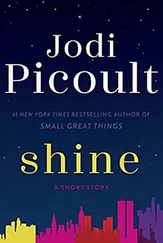For all these reasons, I am very attentive when Dr. Wayne Nussbaum takes the stand to testify. I know him; I’ve seen him before at crime scenes. Once, I wrote him a letter and got his autograph.
He lists his credentials: Yale University Medical School followed by rotations in pathology and emergency medicine before becoming an assistant medical examiner for the State of New York and, finally, twenty years as chief medical examiner in Vermont. “Did you perform an autopsy on Jess Ogilvy?” asked Helen Sharp.
“I did. On the afternoon of January eighteenth,” he said. “The body was brought to my office in the morning but had to thaw.”
“What was the temperature outside when she was found?”
“Twelve degrees, which allowed for excellent preservation.”
“How was she dressed?”
“She was wearing sweatpants and a T-shirt and a light jacket. She had on a bra, but her underwear was on backward. There was a tooth wrapped in toilet paper in a small front pocket of the sweatpants, and her cell phone was zipped into the pocket of her jacket.”
Usually on CrimeBusters, when a medical examiner takes the stand, it is a five-minute testimony, tops. Helen Sharp, however, walks Dr. Nussbaum through his findings three times: once verbally, a second time with a diagram of a body while Dr. Nussbaum draws his findings in red marker; and finally with photographs he’d taken during the autopsy. Me, I’m loving every minute. I don’t know about that lady on the jury, though, who looks like she is about to throw up.
“You said, Doctor, that you took samples of Jess Ogilvy’s urine, heart blood, and vitreous humor from her eyes for toxicology purposes?”
“That’s correct.”
“What’s the purpose of those exams?”
“They let us know what foreign substances are in the victim’s bloodstream. In the case of the heart blood and the vitreous humor, it’s at the time of death.”
“What were the results?”
“Jessica Ogilvy did not have any drugs or alcohol in her system at the time of death.”
“Did you take photographs of the body during the autopsy?”
“Yes,” he says. “It’s routine procedure.”
“Did you make any notations as to unusual marks or bruises on the body?”
“Yes. The victim had bruises on her throat consistent with choking and bruises on her arms consistent with being restrained. The bruises were reddish violet and had sharp edges, which suggested that they occurred within twenty-four hours of death. In addition, the skin on her lower back had been scraped postmortem, most likely as a result of being dragged. You can see the difference in the photograph, here, between the two sorts of bruises. The postmortem one is yellowish and leathery.” He pointed to another photograph, this one of Jess’s face. “The victim was badly beaten. She had suffered a basal skull fracture, bruises around the eyes, and a broken nose. She was missing a front tooth.”
“Were you able to tell if those injuries were pre- or postmortem?”
“The fact that bruising occurred indicates the injury was prior to death. The tooth; well, that I can’t say for sure, but it did seem to be the one tucked in her pocket.”
“Can you punch someone so hard in the face that they lose a tooth?”
“Yes, it’s possible,” Dr. Nussbaum says.
“Would someone who had been punched hard in the face present with the same sorts of injuries you found on the victim’s body?”
“Yes.”
“Doctor,” Helen Sharp asks, “after having done the autopsy and studied the results from the toxicology labs, did you form an opinion within a reasonable degree of medical certainty about the manner of death?”
“Yes, I ruled it a homicide.”
“What was the cause of Jess Ogilvy’s death?”
“Blunt head trauma, which led to subdural hematoma-bleeding inside the skull, consistent with a blow or a fall.”
“How long does it take to die from a subdural hematoma?”
“It can be immediate, or it can take hours. In the victim’s case, it was relatively soon after injury.”
“Did the bruises you found on Jess Ogilvy’s neck and arms contribute to her death?”
“No.”
“How about the tooth that was knocked out?”
“No.”
“And there were no drugs or alcohol in her system?”
“No, there were not.”
“So, Dr. Nussbaum,” Helen Sharp says, “the sole cause of fatal injury to Jess Ogilvy that you found during the autopsy was a basal skull fracture that caused internal bleeding in the skull?”
“That’s correct.”
“Your witness,” the prosecutor says, and Oliver stands up.
“All those injuries you found on Jess Ogilvy’s body,” he says. “You have any idea who caused them?”
“No.”
“And you said that a subdural hematoma could be caused by either a blow or a fall.”
“Correct.”
“Isn’t it possible, Doctor,” Oliver asks, “that Jess Ogilvy tripped and fell and suffered a subdural hematoma?”
The medical examiner looks up and smiles a little.
It’s one of those smiles I hate, the kind that might mean You are so smart but might also mean You moron. “It’s possible Jess Ogilvy tripped and fell and suffered a subdural hematoma,” Dr. Nussbaum says. “But I highly doubt that she tried to strangle herself, or knocked out her own tooth, put on her underwear backward, dragged herself three hundred yards away, and wrapped herself in a quilt in a culvert.”
I laugh out loud-that’s such a great line it might have been scripted for CrimeBusters. My mother and Oliver both look at me, and that expression’s easy to read. They’re both one hundred percent pissed off.
“Perhaps now’s a good time for a serenity break?” the judge asks.
“Sensory!” Oliver snaps. “It’s a sensory break!”
Judge Cuttings clears his throat. “I’ll take that as a yes.”
In the sensory break room, I lie underneath the weighted blanket. My mother’s in the bathroom; Theo has his head on the vibrating pillow. He talks through his teeth and sounds like a robot. “Tickle me, Elmo,” he says.
“Jacob,” Oliver says after a minute and thirty-three seconds of silence. “Your behavior in this courtroom is making me very angry.”
“Well, your behavior in this courtroom is making me very angry,” I say. “You still haven’t told them the truth.”
“You know it’s not our turn yet. You’ve seen trials on television. The prosecution goes first, and then we get to undo the damage Helen Sharp’s done. But Jacob, Jesus. Every time you have an outburst or you laugh at something a witness says, that adds to the damage.” He looks at me. “Imagine you’re a juror, and you’ve got a daughter about Jess’s age, and then the defendant laughs out loud when the medical examiner talks about the gruesome way Jess died. What do you think that juror’s saying to himself?”
“I’m not a juror,” I say, “so I don’t really know.”
“What the medical examiner said at the end was pretty amusing,” Theo adds.
Oliver frowns at him. “Did I ask you for your opinion?”
“Did Jacob ask you for yours ?” Theo says, and then he tosses me the pillow. “Don’t listen to him,” Theo tells me, and he slips out of the sensory break room.
I find Oliver staring at me. “Do you miss Jess?”
“Yes. She was my friend.”
“Then why don’t you show it?”
“Why should I?” I ask, sitting up. “If I know I feel it, that’s what counts. Don’t you ever look at someone who’s hysterical in public and wonder if it’s because they really feel miserable or because they want others to know they’re miserable? It kind of dilutes the emotion if you display it for the whole world to see. Makes it less pure.”
Читать дальше












